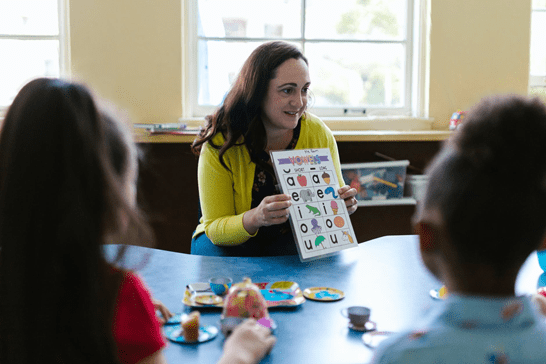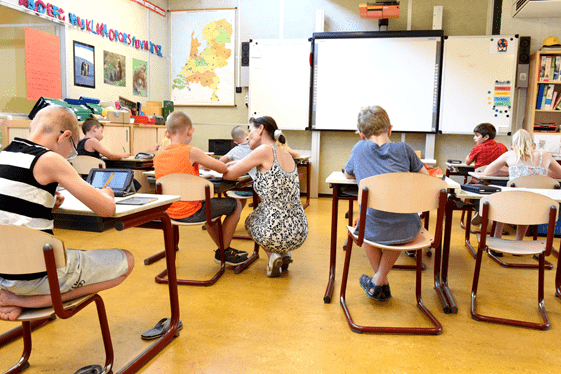Wordle Illuminates the Power of Play in Phonics Instruction
Sometimes, all we need is a simple reminder to play. The popular phonics game Wordle, recently acquired by the New York Times, now offers a daily opportunity to play: with phonics, that is. Each day, players have six chances to guess a random 5-letter word. After each attempt, the letters guessed correctly turn green, while letters that are in the word but in the wrong place are highlighted yellow; letters not in the word at all turn gray. In some elementary classrooms, this simple guessing game now functions as a snack-size activity for elementary schoolers. Drawing from the popularity of Wordle, this week’s newsletter explores the power of play to improve reading, writing, and spelling skills.

In an EdWeek teacher interview, Kim Palcic, a third grade teacher in Kansas, and Maureen Elliot, a fourth grade teacher in New York, both present Wordle as a teaching tool to support engagement in reading and social development. Palcic plays Wordle with her class using vowel groups and reading anchor charts to visually connect the reading game to their phonics lessons. In Palcic’s classroom as well as Elliot’s, students are encouraged to collaborate with their neighbors to identify the word: each class starts with a word and begins to play, hardly realizing that they’re learning about phoneme-grapheme associations and how letters can make multiple sounds. Elliot notes that while her fourth graders are typically moving away from phonemes and graphemes, COVID-induced learning gaps mean that some kids still require explicit phonics instruction. Elliot subsequently pairs up students with different skill levels for Wordle, allowing some to serve as peer leaders while other students catch up on foundational phonics skills.
Unlike other phone-based word games, Elliot insists that Wordle is not simply a passing trend: as a classroom tool, the power of the game is rooted in the science of reading. Based on the structure and popularity of Wordle, the Association of Supervision and Curriculum Development (ASCD) recently outlined key insights about effective reading instruction gained from phonics games:
- Some letters are more common than others, reminding educators that teaching the alphabet is not as simple as A through Z: rather, research on the science of reading suggests that the English alphabet should be taught based on letter frequency and difficulty.
- The positions of letters in words matters. Young readers memorize more letter positions from high exposure to words, along with explicit phonics instruction.
- Multiple letters can represent a single sound. For example, the word tough has five letters but only three sounds (/t/ /uh/ /f/), while the word thigh has five letters and two sounds (/th/ /ī/). Although letter-by-letter decoding is appropriate for young readers, they’ll soon learn that attending to letters around a letter is necessary for reading comprehension.
- Vocabulary knowledge is important for spelling and reading. This is especially important as students become older, encounter more complex texts, and face more challenging assignments in reading comprehension and writing composition.

Finally - and most importantly for our readers - phonics and spelling can be FUN. By thinking about reading and vocabulary expansion as a form of play, parents and caregivers are empowered to play and, in turn, read more with their children at home - whether through Wordle, the animated phonics activities available at Reading Teacher, or any other science-based phonics game.
Take-Aways:
- The phonics game Wordle has become wildly popular across the Internet, delighting both reading teachers and their students.
- The game can function as a classroom tool for reading instruction and encourages students to work as creative collaborators.
- Wordle and other high-quality phonics games help reading teachers understand the power of play in expanding vocabulary, forming phoneme-grapheme associations, and other foundational skills for reading and writing competency.
Start Teaching Reading for Free Now!
Access Level 1’s four interactive stories and the accompanying supplemental resources to teach elementary students how to read. No credit card is needed. Join the 42,635 teachers and students using our reading program.
